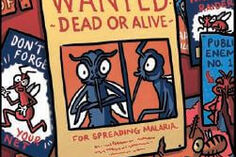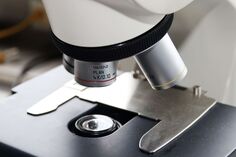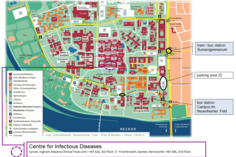
Die AG Lanzer im Detail
Aktuelle Mitarbeiter*innen
Prof. Dr. Michael Lanzer (AG-Leiter, 1999 - aktuell)
Cecilia Sanchez, PhD (Wissenschaftlerin, 1999 - aktuell)
Dr. Guillermo Gómez (Doktorand, 2020 - 2024, seither Postdoc)
Dr. Jessica Kehrer (Mikroskop-Spezialistin)
Kim Carlstedt (Doktorandin, 2023 - aktuell)
Manar Ewis (Doktorandin, 2024 - aktuell)
Soria Gasparini (Doktorandin, 2023 - aktuell)
Atdhe Kernaja (Biologielaborant)
Marina Müller (MTA)
& wechselnde BSc Studierende :-)
Forschungsschwerpunkt
Die Pathogenität humaner Malaria-Erreger
Die Pionierarbeit von Sir Ronald Ross, der zeigen konnte, dass Malaria eine von Vektoren übertragene Krankheit ist, konnte 1997 ihren 100. Geburtstag feiern. Mehr als 100 Jahre nach dieser Entdeckung ist Malaria immer noch eine der Hauptgeißeln der Menschheit, welche sich für geschätzte 250 Millionen klinischer Fälle und knapp 1 Million Todesfälle jährlich verantwortlich zeigt. Es wird eine Verschlimmerung der Lage erwartet, da einst wirksame Waffen gegen diese infektiöse Krankheit ihre Schlagkraft verloren haben. Chemotherapeutika versagen heutzutage häufig aufgrund der weit verbreiteten Resistenzmechanismen und Insektizide, die einst vielerorts eingesetzt wurden, um die Malaria-Erreger auszulöschen, kommen aufgrund ökologischer Gesichtspunkte nun dafür nicht mehr in Frage. Neue und preisgünstige Medikamente, die für den Masseneinsatz in Entwicklungsländern geeignet wären, sind nicht in Sicht, genauso wenig wie ein weitgehend wirksamer Malaria-Impfstoff. Um dauerhafte Methoden zur Eindämmung der Malaria entwickeln zu können, ist ein besseres Verständnis der ursächlichen Malaria-Erreger, ihrer Biologie, Virulenz und Pathogenität unabdingbar.
Unsere Ziele bestehen genau darin, in der Bestrebung neue Heilmittel zur Behandlung dieser wichtigen Krankheit zu entwickeln. Wir untersuchen vor allem:
- die molekularen Mechanismen der Umgehung der Immunantwort sowie Zytoadhäsion und wie diese pathogenen Mechanismen die Entwicklung der Krankheit beeinflussen;
- die Entwicklung der Chloroquin-Medikamentenresistenz;
- die Mechanismen der Ionen Homeostasis;
- die Anwendung von Ionen-Austauschern als neue Ziele für effektive Medikamenten-Entwicklungsprogramme.
Ausgewählte Publikationen der AG Lanzer
(der letzten 5 Jahre)
Patra P, Sanchez C, Lanzer M, Schwarz US. (2025) Pair cross-correlation analysis for assessing protein co-localization. Biophys J. 2025 Mar 11:S0006-3495(25)00138-9. doi: 10.1016/j.bpj.2025.03.002. Epub ahead of print. PMID: 40077967.
Rathay V, Fürle K, Kiehl V, Ulmer A, Lanzer M, Thomson-Luque R. (2024) IgG Subclass Switch in Volunteers Repeatedly Immunized with the Full-Length Plasmodium falciparum Merozoite Surface Protein 1 (MSP1). Vaccines. 12(2):208. https://doi.org/10.3390/vaccines12020208
Alder A, Sanchez CP, Russell MRG, Collinson LM, Lanzer M, Blackman MJ, Gilberger TW, Matz JM (2023) The role of Plasmodium V-ATPase in vacuolar physiology and antimalarial drug uptake. Proc Natl Acad Sci U S A. Jul 25;120(30):e2306420120. doi: 10.1073/pnas.2306420120. Epub 2023 Jul 18. PMID: 37463201; PMCID: PMC10372686.
Rosenkranz M, Fürle K, Hibbert J, Ulmer A, Ali A, Giese T, Blank A, Haefeli WE, Böhnlein E, Lanzer M, Thomson-Luque R (2023) Multifunctional IgG/IgM antibodies and cellular cytotoxicity are elicited by the full-length MSP1 SumayaVac-1 malaria vaccine. NPJ Vaccines. Aug 9;8(1):112. doi: 10.1038/s41541-023-00701-2. PMID: 37558673; PMCID: PMC10412566.
Berger F, Gomez GM, Sanchez CP, Posch B, Planelles G, Sohraby F, Nunes-Alves A, Lanzer M (2023) pH-dependence of the Plasmodium falciparum chloroquine resistance transporter is linked to the transport cycle. Nat Commun. Jul 15;14(1):4234. doi: 10.1038/s41467-023-39969-2. PMID: 37454114; PMCID: PMC10349806.
Gomez GM, D'Arrigo G, Sanchez CP, Berger F, Wade RC, Lanzer M (2023) PfCRT mutations conferring piperaquine resistance in falciparum malaria shape the kinetics of quinoline drug binding and transport. PLoS Pathog. Jun 7;19(6):e1011436. doi: 10.1371/journal.ppat.1011436. PMID: 37285379; PMCID: PMC10281575.
Haag M, Kehrer J, Sanchez CP, Deponte M, Lanzer M (2022) Physiological jump in erythrocyte redox potential during Plasmodium falciparum development occurs independent of the sickle cell trait. Redox Biol. Nov 10;58:102536. doi: 10.1016/j.redox.2022.102536. Epub ahead of print. PMID: 36401887; PMCID: PMC9673094.
Tanaka M, Lanzer M (2022) Receptor-Functionalized Lipid Membranes as Biomimetic Surfaces for Adhesion of Plasmodium falciparum-Infected Erythrocytes. Methods Mol Biol. 2470:601-613. doi: 10.1007/978-1-0716-2189-9_45. PMID: 35881377.
Karathanasis C, Sanchez CP, Heilemann M, Lanzer M (2022) Assessing Antigen Presentation on the Surface of Plasmodium falciparum-Infected Erythrocytes by Photoactivated Localization Microscopy (PALM). Methods Mol Biol. 2470:457-466. doi: 10.1007/978-1-0716-2189-9_34. PMID: 35881366.
Cyrklaff M, Sanchez CP, Hanebutte L, Jäger J, Schwarz US, Lanzer M (2022) An Improved Method for Assessing Antigen Presentation on the Surface of Plasmodium falciparum-Infected Erythrocytes by Immuno-Electron Microscopy. Methods Mol Biol. 2470:445-455. doi: 10.1007/978-1-0716-2189-9_33. PMID: 35881365.
Sanchez CP, Manson EDT, Moliner Cubel S, Mandel L, Weidt SK, Barrett MP, Lanzer M (2022) The Knock-Down of the Chloroquine Resistance Transporter PfCRT Is Linked to Oligopeptide Handling in Plasmodium falciparum. Microbiol Spectr. Aug 31;10(4):e0110122. doi: 10.1128/spectrum.01101-22. Epub 2022 Jul 18. PMID: 35867395; PMCID: PMC9431119.
Wai CH, Jin J, Cyrklaff M, Genoud C, Funaya C, Sattler J, Maceski A, Meier S, Heiland S, Lanzer M, Frischknecht F, Kuhle J, Bendszus M, Hoffmann A (2022) Neurofilament light chain plasma levels are associated with area of brain damage in experimental cerebral malaria. Sci Rep. Jun 24;12(1):10726. doi: 10.1038/s41598-022-14291-x. PMID: 35750882; PMCID: PMC9232608.
Jäger J, Patra P, Sanchez CP, Lanzer M, Schwarz US (2022) A particle-based computational model to analyse remodelling of the red blood cell cytoskeleton during malaria infections. PLoS Comput Biol. Apr 8;18(4):e1009509. doi: 10.1371/journal.pcbi.1009509. PMID: 35394995.
Jin J, Ba MA, Wai CH, Mohanty S, Sahu PK, Pattnaik R, Pirpamer L, Fischer M, Heiland S, Lanzer M, Frischknecht F, Mueller AK, Pfeil J, Majhi M, Cyrklaff M, Wassmer SC, Bendszus M, Hoffmann A (2022) Transcellular blood-brain barrier disruption in malaria-induced reversible brain edema. Life Sci Alliance. Mar 8;5(6):e202201402. doi: 10.26508/lsa.202201402. PMID: 35260473; PMCID: PMC8905774.
Sanchez CP, Patra P, Chang SS, Karathanasis C, Hanebutte L, Kilian N, Cyrklaff M, Heilemann M, Schwarz US, Kudryashev M, Lanzer M (2022) KAHRP dynamically relocalizes to remodeled actin junctions and associates with knob spirals in Plasmodium falciparum-infected erythrocytes. Mol Microbiol. Feb;117(2):274-292. doi: 10.1111/mmi.14811. Epub 2021 Sep 22. PMID: 34514656.
Dijkman PM, Marzluf T, Zhang Y, Chang SS, Helm D, Lanzer M, Bujard H, Kudryashev M (2021) Structure of the merozoite surface protein 1 from Plasmodium falciparum. Sci Adv. Jun 2;7(23):eabg0465.
Fröhlich B, Dasanna AK, Lansche C, Czajor J, Sanchez CP, Cyrklaff M, Yamamoto A, Craig A, Schwarz US, Lanzer M, Tanaka M (2021) Functionalized supported membranes for quantifying adhesion of P. falciparum-infected erythrocytes. Biophys J. Jul 8:S0006-3495(21)00552-X
Bukau B, Lanzer M, Melchers F, Wallon G (2020) Hermann Bujard (1934 - 2020) - pioneering researcher and visionary science politician. EMBO J. Dec 1;39(23):e106981
Frohlich B, Yang Y, Thoma J, Czajor J, Lansche C, Sanchez C, Lanzer M, Cloetens P, Tanaka M (2020) Nanofocused Scanning X-ray Fluorescence Microscopy Revealing an Effect of Heterozygous Hemoglobin S and C on Biochemical Activities in Plasmodium falciparum-Infected Erythrocytes. Anal Chem 92: 5765-5771
Blank A, Furle K, Jaschke A, Mikus G, Lehmann M, Husing J, Heiss K, Giese T, Carter D, Bohnlein E, Lanzer M, Haefeli WE, Bujard H (2020) Immunization with full-length Plasmodium falciparum merozoite surface protein 1 is safe and elicits functional cytophilic antibodies in a randomized first-in-human trial. NPJ Vaccines 5: 10
News - Lanzer group
DGP Conference in Gießen (15-17 March 2023)
From 15-17 March 2023 the world of parasitology was guest in Gießen where this year's annual meeting of the German Society for Parasitology (DGP) took place.
It was a quite successful meeting for our staff members: our PhD student Monami Roy Chowdhury (Frischknecht lab) won the 1st poster prize, the former Ganter lab PhD student Severina Klaus was awarded the Piekarski Award for her dissertation in 2022 and our department head Michael Lanzer was honored with the Rudolf-Leuckart Medal for his outstanding services to the advancement of parasitology.

Laborpraktika, BSc- & MSc-Arbeiten
Für sechs- bis achtwöchige Laborpraktika bzw. auch die Durchführung einer BSc- oder MSc-Arbeit sucht die AG Lanzer motivierte und begeisterungsfähige Studierende (Thema: Blutstadium der Malaria-Infektion).
Wir würden uns freuen, Sie bei unserem Projekt begrüßen zu dürfen, bei welchem wir uns auf KAHRP konzentrieren. KAHRP ist ein Protein, das eine entscheidende Rolle bei der Bildung von Knoten in infizierten roten Blutkörperchen spielt. Es beeinflusst somit maßgeblich die Schwere der Erkrankung.
Im Rahmen des Projekts, das von einem Doktoranden bzw. einer Doktorandin betreut wird, finden fortschrittliche Klonierungs-, Proteinexpressions- und Aufreinigungstechniken Anwendung.
Kontaktdaten:
Prof. Dr. rer. nat. Michael Lanzer
Ärztlicher Direktor
Arbeitsgruppenleiter
C4-Professor für Parasitologie






